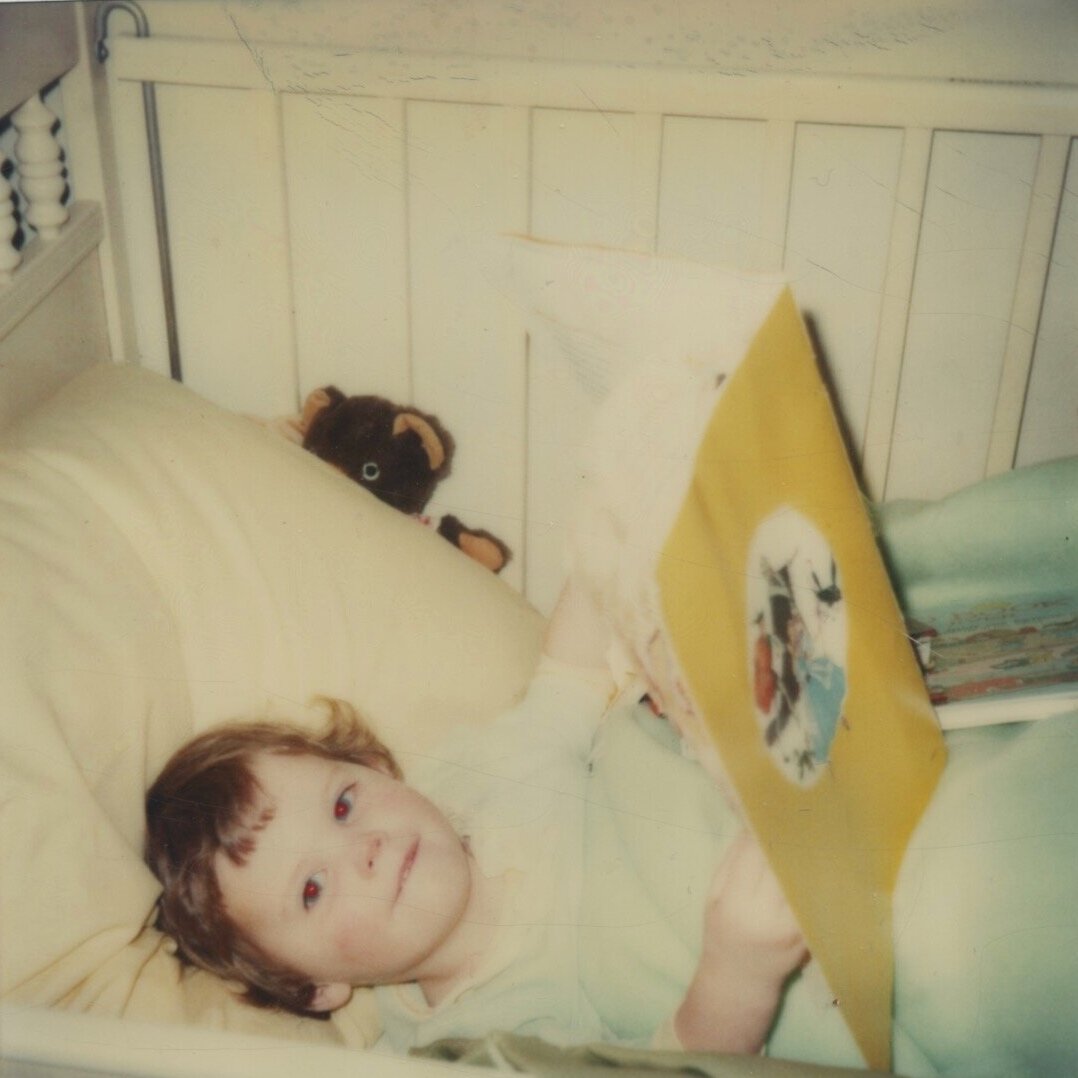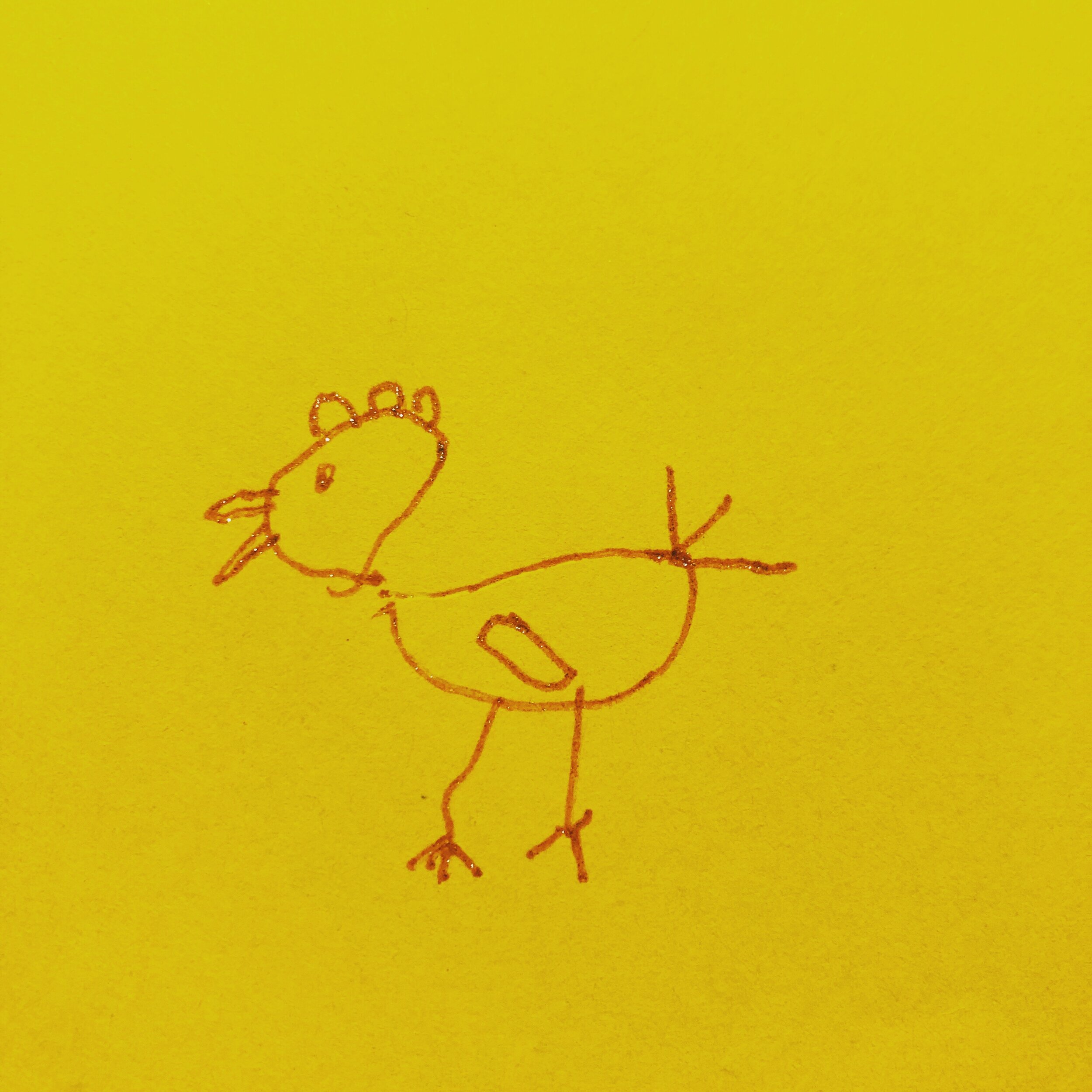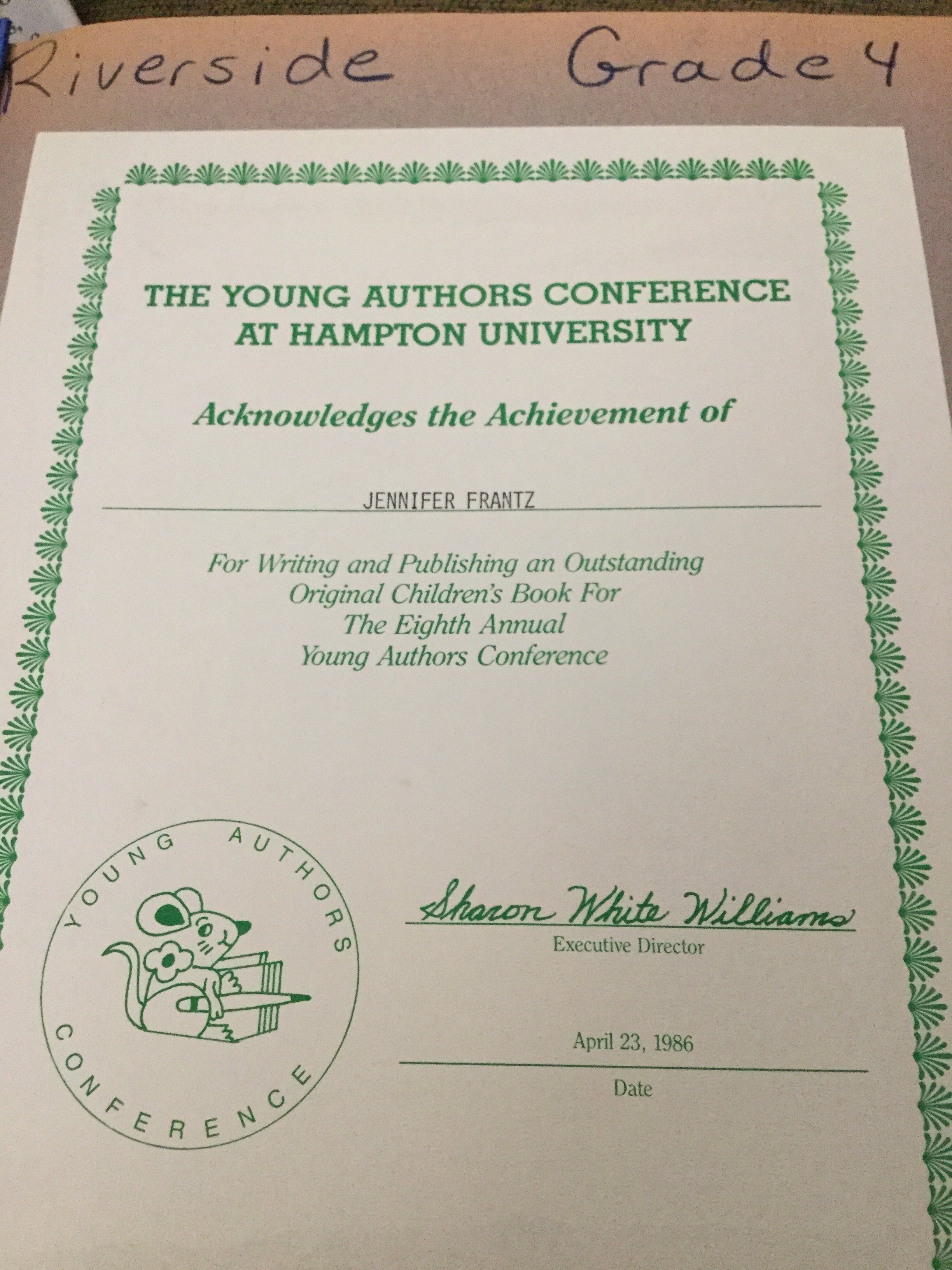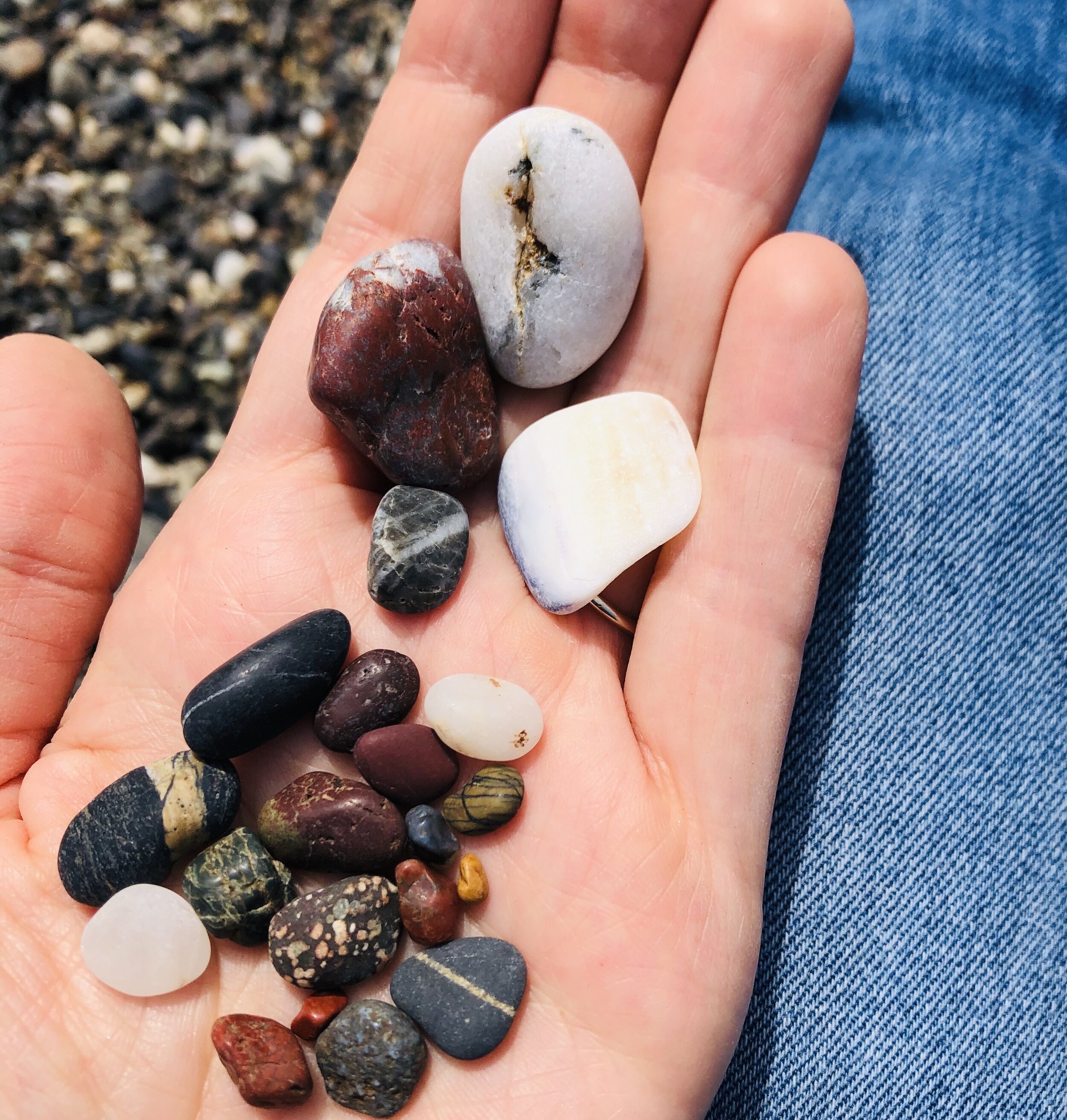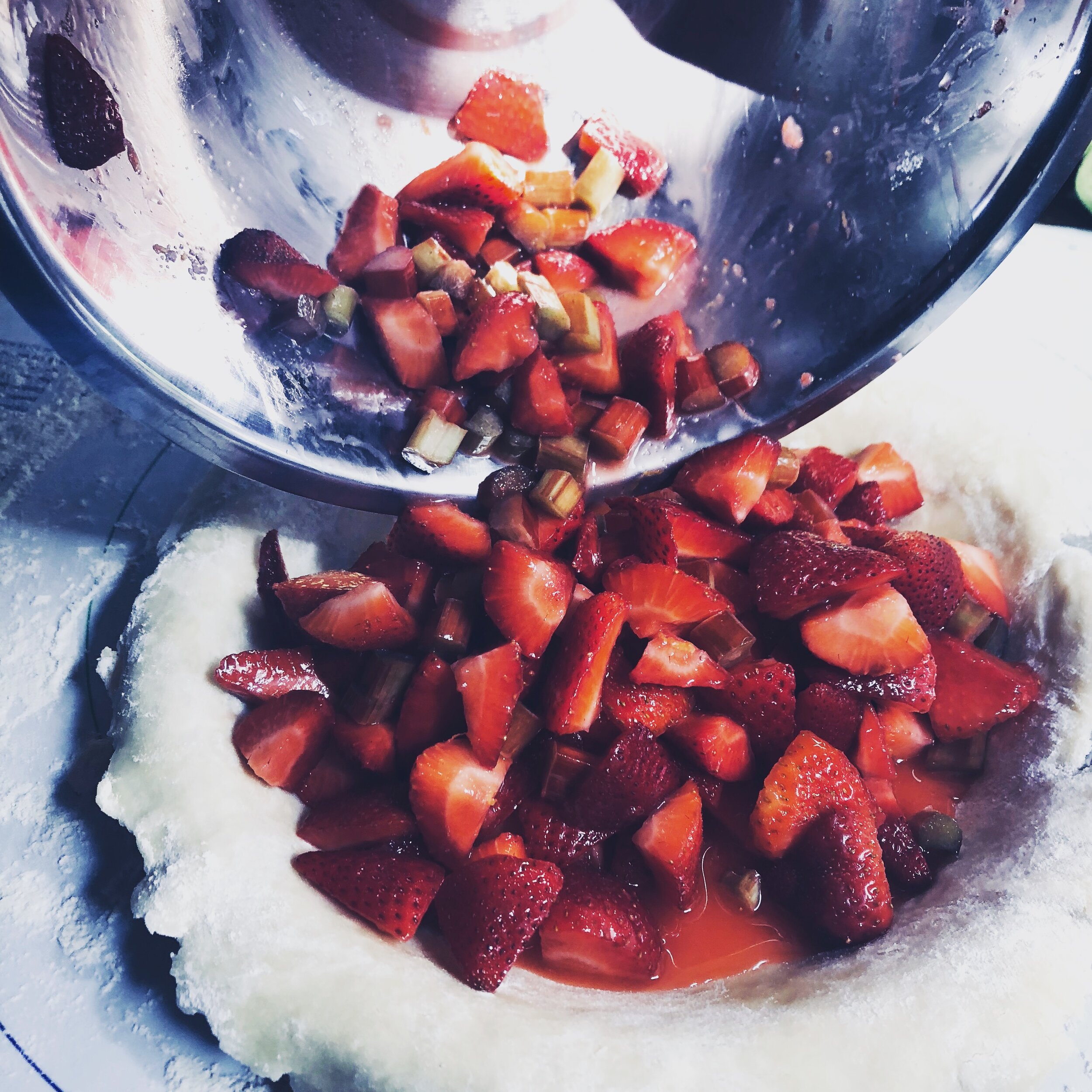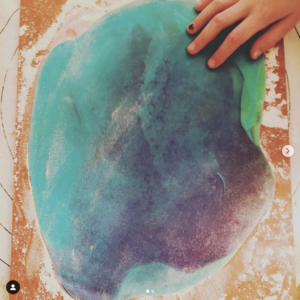What are your earliest memories of books?
I always loved looking at books. I used to pretend to read in my crib, before I really could.
My mom is a library-lover, so I grew up going to the public library. I remember visits on chilly fall afternoons while my big sister was at ballet. The library had a certain smell and a sense of mystery—from never knowing what book you might find to the portrait of Shakespeare by the water fountain that gave me the creeps. I swore his eyes were following me. Maybe too much Scooby-Doo! I’ve made peace with Shakespeare portraits, and I still love libraries and books.
And writing?
The first story I really remember writing was in 4th grade. It was a mystery set in a bakery. I got to go to a Young Author’s Conference where we heard from speakers and broke into writing groups. It felt very special to be surrounded by other people who loved writing. I’m still writing stories about bakeries—I’ve been working on a middle grade book set in a pie factory. It’s not a mystery, but there is a bad guy and a few supernatural moments.
What were your favorite books and authors as a kid?
• The Cranberry series by Wende and Harry Devlin were picture book mysteries with recipes in the back, which I thought was terrific. I was hooked the first time our school librarian, Mrs. Bright, read us one—I believe it was Cranberry Thanksgiving. And yes, Mrs. Bright was her real name and an excellent name for a school librarian. (I also had a doctor called Dr. Payne.)
• Richard Scarry —his characters were so lively and colorful and there were so many fun things to look for in his art. I particularly liked Busy, Busy World which was full of stories about different countries. I used to pour over the map in the book. I love maps in books . . . almost as much as recipes.
• Pickle, Pickle, Pickle Juice by Patty Wolcott. I must have checked this book out a hundred times. (You’d have to ask my mom.) There are only ten words in the whole book. It’s really hard to create a story with ten words— I dare you to try it. Plus, I just really like pickles! I finally bought myself a copy as an adult.
• Mrs. Piggle Wiggle series by Betty McDonald about a magical lady who helped cure children of bad habits in creative ways. Mrs. Piggle Wiggle seemed like she’d be fun to hang out with. She made problems feel normal and like something you could laugh at, even as she was fixing them. I recently read these to my sons. Even though they were written long ago and some things feel old-fashioned (for example: mom characters are housewives while the dad’s go to work) the stories and premise are as fun as ever.
• Biographies, particularly about Clara Barton, the civil war nurse who founded the Red Cross. I still love real stories about real people doing interesting, brave, or unusual things. In the past few years, I’ve read books for grown ups about Cleopatra, Napoleon, Willie Nelson, and Bob Marley, just to name a few. (My book BUNNYLOO is funny story about Napoleon.)
Just a few more . . .
Gregory Griggs and Other Nursery Rhyme People by Arnold Lobel, Roald Dahl for his magic and darkness; Shel Silverstein for his humor and way with words; and a little set called Bunny’s Nutshell Library by Robert Kraus, which I loved because they were tiny and adorable.
Where do you get your ideas from?
Usually from real life—my life, my kids’ lives, people in history’s lives. The stories I create may end up quite fictional or make believe or different from the original idea. Still, some small kernel of it—an event, an idea, a conversation, or even just a feeling—is usually plucked from real life.
Most times the first version of a story I write is nothing like the final version. It takes me a while to figure out what book I’m really trying to write. I have many, many stories that I have written that turn into something else entirely. They may start as a picture book and end up a chapter book, or maybe a character who is not the main character in one book ends up as the hero in another version. For me the act of writing helps me to define the story. I do a lot of rewriting and change big elements from draft to draft. I think of my first drafts like a buffet table of food and just go back with my “plate” and pick out the best bits. The rest is left on the table.
I’ve been writing some stories for many years, just trying to figure out what feels right. Other stories go more quickly and come out pretty close to the way they will end up in the finished book. (Okay, that only happened once.)
What do you like to do when you aren’t writing?
I like to spend time with my family. We enjoy traveling to cities and National Parks in the U.S., as well as going to other countries in Europe, the Caribbean, etc. When I’m hanging out with my kids, we like to playing fun board games like Dragonwood, or make cool projects. We also really like making Halloween costumes.
I love to cook and bake, though I’m not great at following recipes. If a recipe has too many ingredients or steps, my brain starts to glaze over. Usually, I just make things up as I go, adding a bit of this or that until it tastes good to me. I like making breads, soups, pickles, fruit crumbles, herby concoctions, and treats that aren’t so sugary.
I love to read, a lot of non-fiction and biographies for me, and fun children’s books with my kids. (Check out the blog where I’ll be adding some of our favorites!) I love hunting for books in libraries . . . and book stores . . . and used book sales.
I also like to spend time alone. I’m an introvert by nature and that’s how we recharge our batteries. I can spend hours drinking a cup of coffee or daydreaming or reading quietly by myself, and be perfectly content.
Speaking of writing, how can I get my/my child’s/ my neighbor’s great aunt’s sister’s cousin’s book published?
Sorry, there’s no easy answer to this one. Although writing books for kids can be magical and fun, the children’s book market is a competitive, for-profit industry. The path to publication is typically rather grueling—involving writing, rewriting, rewriting some more, tons of research, acquiring an agent, and a healthy heap of rejection. I personally do not recommend this path for children. That said, if you are a grown-up writer who’s ready to do the work, here are some resources you might research and explore to get you started. Best of luck!
The Children’s Writer’s and Illustrator’s Market —a printed guide to children’s book publishers, what they do (and don’t) publish, and whether they look at manuscripts from authors or just agents. It is updated yearly and can be found at some libraries or for purchase.
Children’s editor Harold Underdown’s blog The Purple Crayon:
underdown.org
Josh Funk's Resources for Writers:
joshfunkbooks.com
Your local chapter of SCBWI:
scbwi.org
Literary agents, what they are looking for, and what their submission guidelines are:
agentquery.com
If you’d like to know more about me, check out my bio!

